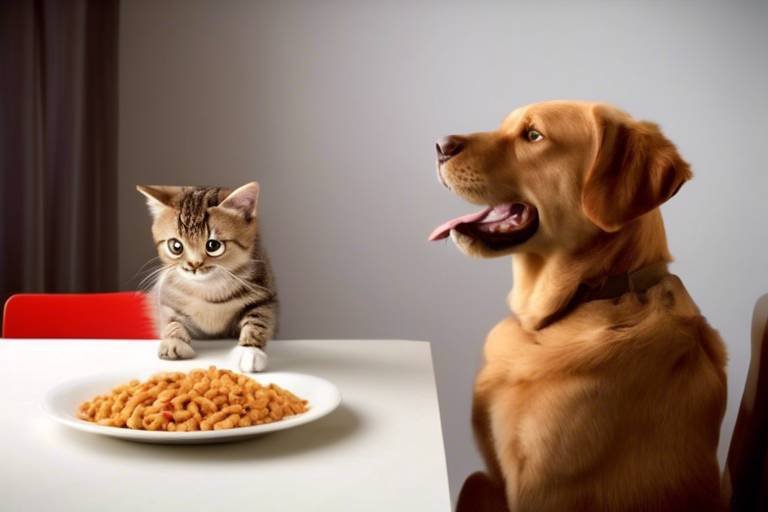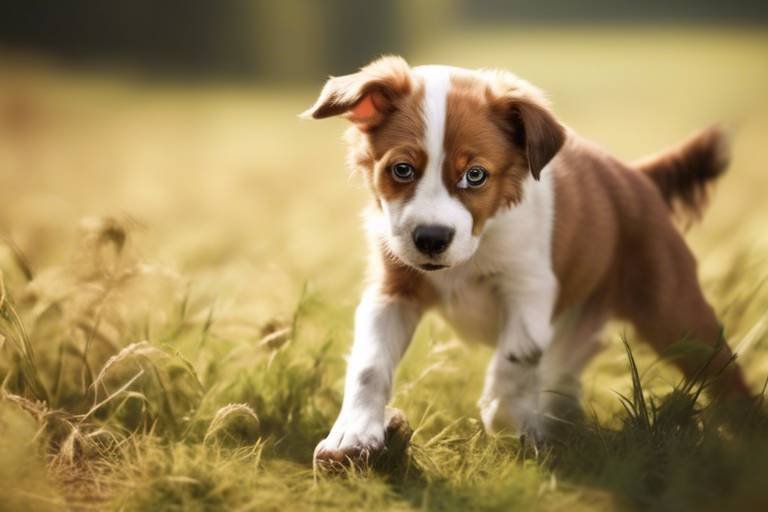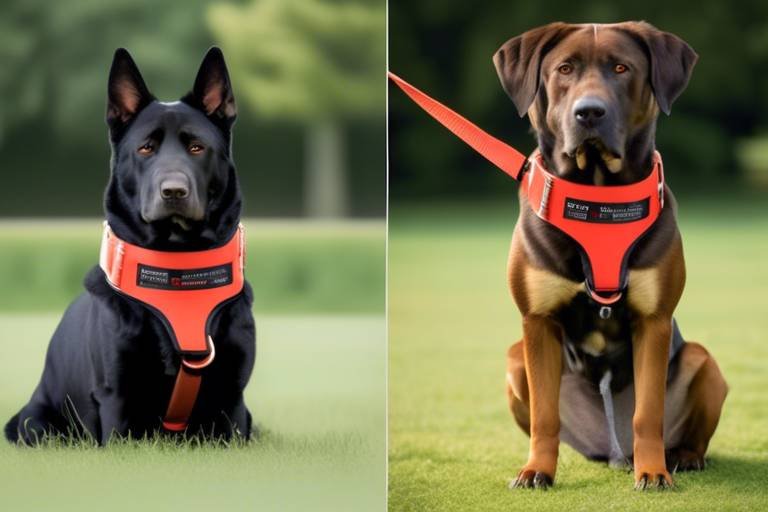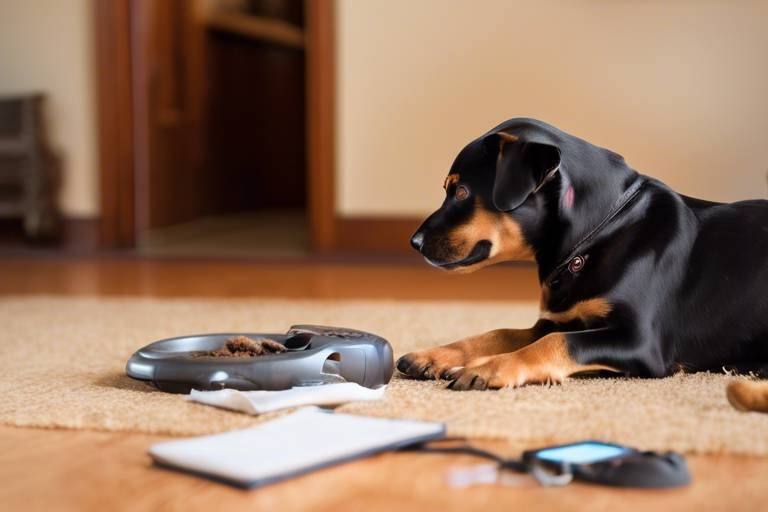How to Train Your Pet to Wait for Their Food
Training your pet to wait for their food might seem like a daunting task, but with the right techniques and a sprinkle of patience, it can be a rewarding experience for both you and your furry friend. Imagine the satisfaction of watching your pet sit calmly, eyes bright with anticipation, but not a single paw moving until you give the green light! This article will explore effective techniques and tips for teaching your pet to patiently wait for their meals, promoting good behavior and enhancing your pet’s overall training experience.
Recognizing the natural instincts and behaviors of your pet is crucial in training them to wait for food. Pets, especially dogs and cats, have an innate drive to eat, which can sometimes lead to eagerness that borders on impatience. Have you ever noticed how your dog can practically dance in circles when it's time for dinner? This excitement stems from their survival instincts. By understanding these instincts, you can better address their eagerness and channel it into positive behavior.
Timing plays a significant role in training success. You wouldn't want to try to teach your pet a new command when they're in a hyper mood or when they're too tired to focus, right? The optimal moments for training sessions are usually just before meal times when your pet is alert and slightly hungry. This way, they are more likely to be receptive to learning, making your training sessions more effective and enjoyable.
Understanding when your pet is hungry can help you structure training sessions effectively. Pets often exhibit various signs when they're feeling peckish. Look for behaviors like:
- Pacing around the food bowl
- Whining or barking
- Following you around the kitchen
By recognizing these cues, you can time your training sessions to coincide with their hunger, making them more motivated to wait for their food.
Positive reinforcement is a powerful training tool that can make a world of difference. Every time your pet demonstrates patience, reward them with a treat or praise. This not only reinforces good behavior but also encourages them to continue waiting patiently. Think of it as a little celebration for their good manners! Over time, your pet will start associating the act of waiting with receiving rewards, making it a win-win situation.
Establishing a regular feeding routine can significantly aid in training. Pets thrive on consistency, and having a set schedule helps them understand when to expect their meals. This predictability can help them learn to wait patiently, as they will know that food is coming at a specific time each day. Try to feed your pet at the same times every day, and soon enough, they’ll be trained to wait for their food without the fuss.
Teaching your pet the “wait” command is essential for this training process. Start by having your pet sit in front of their food bowl, and use a command like “wait” in a firm yet gentle tone. Gradually increase the time they must wait before allowing them to eat. This command can be reinforced through practice and positive reinforcement. Remember, patience is key—both for you and your pet!
Training your pet to wait for food can come with its fair share of challenges. It's not uncommon for pet owners to face obstacles along the way. Some pets may struggle with impatience, while others might be easily distracted. Understanding these challenges can help you find effective solutions and keep your training sessions on track.
If your pet shows signs of impatience, it might be time to reassess your training approach. Break down the waiting process into smaller steps. For instance, if your pet can only wait for a few seconds, start there and gradually increase the time. It’s all about building their patience little by little. Remember, every second counts, so celebrate even the smallest victories!
Distractions can disrupt training sessions in a heartbeat. To minimize distractions, choose a quiet area for training where your pet can focus solely on you and their food. This could be a separate room or a corner of your home that isn’t cluttered with toys or other pets. The less chaotic the environment, the more attentive your pet will be during training.
Tracking your pet's progress is vital for effective training. Keep a journal of their behavior and note any improvements or setbacks. This will help you identify what works best for your pet. If something isn’t working, don’t hesitate to adjust your techniques. Training is a dynamic process, and being adaptable is key to success.
Q: How long does it take to train my pet to wait for food?
A: Training time can vary based on your pet's temperament and previous training experience. Some pets may learn quickly, while others may take a bit longer. Consistency is crucial!
Q: Can I use toys instead of food for training?
A: Absolutely! If your pet is more motivated by toys, feel free to use them as rewards during training sessions.
Q: What if my pet refuses to wait?
A: If your pet is struggling to wait, go back to basics and reduce the waiting time. Gradually increase the duration as they become more comfortable with the command.

Understanding Your Pet's Behavior
When it comes to training your furry friend, understanding their behavior is the **key** to unlocking a successful learning experience. Pets, much like humans, have their own unique personalities and instincts that drive their actions. For instance, have you ever noticed how your dog’s tail wags furiously when they sense food? This excitement is rooted in their natural instincts as hunters and scavengers. They are hardwired to anticipate food, which can lead to impatience during feeding times. By recognizing these behaviors, you can tailor your training methods to better suit your pet's needs.
Another essential aspect to consider is the psychology behind your pet's eagerness to eat. Dogs and cats often exhibit behaviors such as barking, meowing, or even pawing at their bowls when they are hungry. These actions are their way of communicating their needs. Understanding these cues can help you determine when to initiate training sessions. For example, if your pet is showing signs of hunger, such as pacing or whining, it may be the perfect time to engage them in a training exercise that teaches them to wait for their food.
Moreover, it's crucial to note that pets thrive on routine. They are creatures of habit and feel more secure when they know what to expect. By establishing a consistent feeding schedule, you can help your pet understand when it's time to eat, thereby reducing their anxiety and eagerness. This routine can also aid in reinforcing the behaviors you want to encourage, such as waiting patiently for their meals. So, when you set a specific time for feeding, make sure to stick to it. This will not only help your pet learn but also build trust in your leadership.
Additionally, consider the environment in which you are training your pet. A calm and distraction-free space is vital. If your pet is surrounded by noise or other pets vying for attention, their focus will be split, making it harder for them to learn the desired behavior. Therefore, choosing a quiet room or a designated training area can significantly enhance your training effectiveness. Remember, patience is a virtue, and understanding your pet's behavior is the first step towards a harmonious relationship.
In conclusion, by taking the time to observe and understand your pet's behavior, you set the foundation for effective training. Recognizing their instincts, communication cues, and the importance of routine will not only help you teach them to wait for their food but will also strengthen the bond between you and your beloved companion.

Choosing the Right Time to Train
Timing is everything, especially when it comes to training your pet to wait for their food. You wouldn’t want to try and teach your furry friend a new trick when they’re bouncing off the walls with excitement or when they’re too sleepy to pay attention, right? Finding the optimal moments for training sessions is crucial. Ideally, you want to catch them in a state where they are calm yet aware, making them more receptive to learning.
One of the best times to train your pet is just before their scheduled meal. Imagine this: your pet is sitting there, their nose twitching in anticipation of food, but you’re asking them to wait. This creates a perfect scenario where their natural instincts are engaged, and they are more likely to understand the concept of waiting. However, remember that training should never feel like a punishment; it should be a fun and engaging experience for both of you!
Another excellent time to train is when your pet has just woken up from a nap. They are usually refreshed and in a good mood, making it easier for them to focus on you. Plus, they haven’t had the chance to get too hungry yet, which can help reduce any potential impatience. Just like humans, pets have their own peak times for learning, so pay attention to their patterns. You might notice that your dog is more alert in the morning while your cat might be more playful in the evening.
Here are a few tips on choosing the right time for training:
- Observe your pet's energy levels throughout the day.
- Choose a quiet environment with minimal distractions.
- Ensure that your pet is not overly hungry or too full.
- Stay consistent with your training times to build a routine.
By honing in on the right moments, you’re not just teaching your pet to wait; you’re also creating a positive association with training itself. Remember, every pet is unique, so it might take some time to figure out their ideal training windows. Be patient and flexible, and soon enough, you’ll find the sweet spot that works for both of you!
Identifying Your Pet's Hunger Cues
Understanding your pet's hunger cues is like deciphering a secret language. Each pet has its own unique way of expressing when they're ready to eat, and as a responsible pet owner, it's essential to tune in to these signals. By recognizing these cues, you can structure your training sessions more effectively, ensuring that your pet is not only eager to learn but also motivated by their natural instincts.
Common signs of hunger can include:
- Vocalizations: Many pets will vocalize their hunger through barking, meowing, or whining. If your furry friend is suddenly more vocal than usual, it might be a sign that their stomach is growling for attention!
- Restlessness: A hungry pet may pace around their food bowl or follow you around the house, showing signs of impatience. This behavior is often a clear indication that they are eagerly anticipating their next meal.
- Excitement at Meal Times: If your pet jumps with joy or runs to their feeding area as soon as they sense it's mealtime, that’s a strong cue that they are ready to eat.
- Increased Attention to Food: When pets start sniffing around the kitchen or staring at your plate during meal times, they are likely signaling their hunger. This is their way of saying, “Hey, I want some of that!”
By paying close attention to these behaviors, you can identify when your pet is truly hungry versus when they are simply looking for a snack. It’s important to differentiate between the two, as feeding them at the wrong times could disrupt the training process. For instance, if your pet is constantly begging for food, they may not fully understand the concept of waiting.
To make this process even easier, consider keeping a hunger diary where you note down your pet's feeding times, their behaviors around meal times, and any other relevant observations. This can help you spot patterns over time and adjust your training sessions accordingly. Remember, patience is key! Just like us, pets have their moods and preferences, and understanding these can significantly enhance your training experience.
In conclusion, recognizing your pet's hunger cues is not just about feeding them; it’s about building a deeper connection and understanding their needs. By being attentive to their signals, you can create a more effective training environment where your pet learns to wait for their food patiently. So, keep your eyes and ears open—your pet is trying to communicate with you!
Using Positive Reinforcement
When it comes to training your pet to patiently wait for their food, positive reinforcement is your best friend. This technique is not just about rewarding good behavior; it's about creating a bond of trust and understanding between you and your furry companion. Imagine this: every time your pet successfully waits for their meal without jumping or barking, you shower them with praise or a tasty treat. This not only reinforces the desired behavior but also makes your pet associate waiting with something enjoyable. It's like teaching them that patience truly pays off!
So, how do you effectively implement positive reinforcement in your training sessions? First, it's essential to choose the right rewards. Some pets respond better to treats, while others may prefer verbal praise or a favorite toy. The key is to find what motivates your pet the most. For instance, if your dog goes wild for peanut butter, consider using that as a reward when they wait patiently. This strategy not only encourages good behavior but also makes training a fun and engaging experience for both of you.
Here's a simple breakdown of how to apply positive reinforcement:
- Start Small: Begin with short waiting periods and gradually increase the time as your pet becomes more comfortable with the concept.
- Be Immediate: Always reward your pet immediately after they exhibit the desired behavior. This helps them make the connection between waiting and the reward.
- Stay Consistent: Use the same cues and rewards consistently to avoid confusing your pet.
- Mix It Up: Occasionally change the reward to keep your pet excited about training. This could be a different treat or a new toy.
Additionally, timing is crucial in positive reinforcement. If your pet is getting anxious or restless, it's essential to remain calm and patient. Remember, training is a journey, not a race. Celebrate the small victories along the way, whether it's your pet waiting for just a few seconds longer or maintaining eye contact while they wait. These moments are stepping stones toward achieving your ultimate goal: a well-behaved pet who understands that good things come to those who wait!
Lastly, don't forget to incorporate variations in your training sessions. For instance, you might want to practice waiting before playtime or going for a walk. By generalizing the "wait" command to different scenarios, you can help your pet understand that waiting is a valuable skill in various situations. In essence, positive reinforcement not only teaches your pet to wait for their food but also enriches their overall training experience, making it a win-win for both of you!
Q: How long should I train my pet each day?
A: Short, consistent sessions of about 5-10 minutes are usually most effective. This keeps your pet engaged without overwhelming them.
Q: What if my pet doesn't respond to treats?
A: Try different types of rewards, such as praise, toys, or playtime. Every pet is unique, so find what motivates yours!
Q: Is it okay to use negative reinforcement?
A: While some owners may try negative reinforcement, it's generally more effective and humane to focus on positive reinforcement techniques for better long-term results.
Creating a Consistent Feeding Schedule
Establishing a consistent feeding schedule for your pet is one of the most effective strategies you can employ to teach them to wait patiently for their meals. Just like humans thrive on routine, pets also benefit significantly from having a structured eating timetable. When you feed your pet at the same time every day, it helps them understand when to expect their food, reducing anxiety and eagerness around mealtime. Imagine how much easier it would be if you knew exactly when your next meal was coming; your pet feels the same way!
To create an effective feeding schedule, consider the following steps:
- Determine the Right Frequency: Depending on your pet’s age, size, and activity level, the number of meals per day can vary. For example, puppies may require three to four meals a day, while adult dogs typically do well with two. Cats, on the other hand, may prefer smaller, more frequent meals. Tailoring the frequency to your pet’s needs will help establish a routine that suits them.
- Set Specific Times: Choose specific times for feeding that fit into your daily routine. This could be early morning, midday, and evening. Make sure to stick to these times as closely as possible, even on weekends. Consistency is key!
- Use a Timer: If you find it challenging to remember feeding times, set a timer on your phone or use an alarm clock. This little trick can help you stay on track and ensure your pet knows when to expect their meals.
Once you’ve established a schedule, it’s important to remain patient and consistent. Your pet may initially struggle with the concept of waiting, especially if they are used to being fed at irregular times. However, over time, they will learn that mealtime is a predictable event, and their eagerness will diminish. You might notice them becoming more relaxed as they start to associate the designated feeding times with positive experiences.
Additionally, consider using the feeding schedule as an opportunity for training. For instance, before you place their bowl down, ask them to sit and wait. This not only reinforces the idea of waiting but also builds good manners around food. Think of it as a little game; the more they play, the more they learn!
In summary, a consistent feeding schedule is not just about managing your pet’s hunger; it’s a critical component of their training. By establishing a routine, you help your pet feel more secure and teach them the valuable lesson of patience. Remember, the goal is to create a positive experience around mealtime that encourages good behavior and strengthens your bond with your furry friend.
Q: How long should I wait before feeding my pet after they have learned to wait?
A: It’s best to wait a few minutes after your pet has shown patience before feeding them. This reinforces the idea that waiting leads to rewards.
Q: What if my pet refuses to wait?
A: If your pet struggles with waiting, go back to basics. Try shorter waiting periods and gradually increase the time as they get better. Patience is essential!
Q: Can I use treats instead of regular food during training?
A: Absolutely! Using treats can be a great way to motivate your pet. Just ensure that the treats are healthy and appropriate for their diet.
Q: How can I tell if my pet is hungry?
A: Look for signs such as whining, pacing, or following you around the kitchen. These are common cues that your pet is ready for their next meal.
Implementing the
This article will explore effective techniques and tips for teaching your pet to patiently wait for their meals, promoting good behavior and enhancing your pet’s overall training experience.
Recognizing the natural instincts and behaviors of your pet is crucial in training them to wait for food. This section delves into the psychology behind their eagerness and how to address it.
Timing plays a significant role in training success. This section discusses optimal moments for training sessions, ensuring your pet is receptive and focused during the learning process.
Understanding when your pet is hungry can help you structure training sessions effectively. This subheading examines the signs of hunger and how to use them to your advantage.
Positive reinforcement is a powerful training tool. This section outlines techniques for rewarding your pet’s patience, reinforcing good behavior, and encouraging them to wait for their food.
Establishing a regular feeding routine can aid in training. This subheading discusses how consistency in timing can help your pet learn to wait patiently for their meals.
Teaching your pet the “wait” command is essential for successful training. Start by introducing the command in a calm and quiet environment, free from distractions. You can use a treat to get their attention. Hold the treat close to their nose, and as they focus on it, say “wait” in a firm but gentle tone. This is where patience comes into play—don’t give them the treat right away! Instead, wait a few seconds before rewarding them. This initial waiting period helps your pet understand that good things come to those who wait.
As your pet begins to grasp the concept, gradually increase the duration of the wait. You might start with just a couple of seconds and then work your way up to longer periods. Remember, consistency is key here! Use the same command and tone every time, so your pet knows exactly what to expect.
To reinforce the command further, you can practice in different locations and situations. For example, try having them wait before going outside or before you put their food bowl down. Each time they successfully wait, reward them with a treat and lots of praise. This will help them associate the command with positive outcomes.
Here’s a quick summary of the steps to implement the “wait” command:
- Start in a quiet space.
- Use a treat to grab their attention.
- Say “wait” and pause before giving the treat.
- Gradually increase the waiting time.
- Practice in various environments.
By following these steps, you’ll be well on your way to teaching your pet this important command, enhancing their ability to wait patiently for their meals.
Training your pet to wait for food can come with challenges. This section highlights common obstacles pet owners face and offers practical solutions to overcome them.
Impatience can hinder training progress. This subheading provides strategies to manage your pet's impatience and keep them focused on the training process.
Distractions can disrupt training sessions. This section discusses ways to minimize distractions in your training environment, ensuring your pet remains attentive and engaged.
Tracking your pet's progress is vital for effective training. This section emphasizes the importance of monitoring behavior and making necessary adjustments to your training approach as needed.
Q: How long does it typically take to train a pet to wait for food?
A: The time it takes varies by pet, but with consistent training, many pets can learn the “wait” command within a few weeks.
Q: What if my pet doesn’t respond to the “wait” command?
A: If your pet isn’t responding, try reducing distractions and ensuring they are hungry. You may also want to shorten the duration of the wait initially.
Q: Can I use this command for other situations?
A: Absolutely! The “wait” command can be beneficial in various scenarios, such as waiting before going outside or before receiving a toy.
This article will explore effective techniques and tips for teaching your pet to patiently wait for their meals, promoting good behavior and enhancing your pet’s overall training experience.
Recognizing the natural instincts and behaviors of your pet is crucial in training them to wait for food. This section delves into the psychology behind their eagerness and how to address it.
Timing plays a significant role in training success. This section discusses optimal moments for training sessions, ensuring your pet is receptive and focused during the learning process.
Understanding when your pet is hungry can help you structure training sessions effectively. This subheading examines the signs of hunger and how to use them to your advantage.
Positive reinforcement is a powerful training tool. This section outlines techniques for rewarding your pet’s patience, reinforcing good behavior, and encouraging them to wait for their food.
Establishing a regular feeding routine can aid in training. This subheading discusses how consistency in timing can help your pet learn to wait patiently for their meals.
Teaching your pet the “wait” command is essential. This command serves as the cornerstone of your training efforts, providing a clear signal that your pet should pause before diving into their food. Start by having your pet in a calm state, perhaps sitting quietly. Gradually introduce the command by saying “wait” in a firm, yet gentle tone. You might find it helpful to use a treat as a visual cue. Hold the treat in front of your pet's nose, and as they focus on it, say “wait”. If they try to grab it prematurely, gently close your hand around the treat and reinforce the command.
Once your pet understands the command, you can increase the challenge. Start by taking a step back while still holding the treat, maintaining eye contact and saying “wait”. It's all about building trust and understanding. If your pet successfully waits for a few seconds, reward them with the treat and lots of praise. This positive association will encourage them to wait longer in future sessions.
As you progress, you can introduce distractions to test their patience. For example, have someone walk by with another pet or make a noise. If your pet remains calm and waits, reward them generously. Remember, consistency is key! Practice this command in different environments to help your pet generalize the behavior.
Training your pet to wait for food can come with challenges. This section highlights common obstacles pet owners face and offers practical solutions to overcome them.
Impatience can hinder training progress. This subheading provides strategies to manage your pet's impatience and keep them focused on the training process.
Distractions can disrupt training sessions. This section discusses ways to minimize distractions in your training environment, ensuring your pet remains attentive and engaged.
Tracking your pet's progress is vital for effective training. This section emphasizes the importance of monitoring behavior and making necessary adjustments to your training approach as needed.
- How long does it take to train my pet to wait for food? The time varies by pet, but with consistent training, many pets learn the command within a few weeks.
- Can I use this command for other situations? Absolutely! The “wait” command can be applied in various scenarios, such as before going for a walk or entering a car.
- What if my pet refuses to wait? If your pet struggles, revisit the basics. Start with shorter waiting times and gradually increase them.
- Is positive reinforcement necessary? Yes! Positive reinforcement builds a strong bond and encourages your pet to repeat good behavior.
Teaching your pet the “wait” command is not just about instilling discipline; it's about creating a bond of trust and understanding between you and your furry friend. Imagine this: every time you prepare their meal, they’re jumping around like a kid in a candy store, eagerly anticipating their feast. While their excitement is adorable, it can lead to chaos during feeding time. By introducing the “wait” command, you're not only teaching them patience but also setting the stage for a smoother and more enjoyable experience at mealtime.
To begin, start by gathering your pet’s favorite food and a quiet space where distractions are minimal. This will help your pet focus solely on you and the task at hand. The first step is to get your pet to sit. Once they are settled, hold the food bowl in front of them, but don’t place it down immediately. Instead, use a firm yet gentle voice to say “wait.” This command should be clear and consistent. It’s crucial that your pet understands that this is not just a request but a command that they must follow.
Next, it’s important to establish a visual cue. You might find it helpful to use your hand to signal them to stay in place. As you hold the food bowl, if your pet remains calm and does not lunge for the food, reward them with praise or a small treat. This positive reinforcement is key; it tells them that they are doing the right thing. If they attempt to grab the food, gently but firmly say “no” and encourage them to return to the sitting position. Remember, patience is vital here—both for you and your pet.
As your pet becomes more comfortable with the “wait” command, gradually increase the duration they hold the position before you place the food down. Start with just a few seconds and slowly build it up. You can also add variations to the command by moving the bowl further away or even stepping back a few feet. This not only tests their patience but also reinforces the command in different scenarios. Consistency is key, so make sure to practice this regularly.
To help you keep track of your training sessions, consider creating a simple chart. Here’s a basic example:
| Day | Duration of Wait | Pet's Behavior |
|---|---|---|
| 1 | 5 seconds | Calm |
| 2 | 10 seconds | Excited |
| 3 | 15 seconds | Impatient |
By tracking your pet's progress, you can identify patterns in their behavior and adjust your training techniques accordingly. If you notice they become overly excited or impatient, it might be a signal to take a step back and reinforce the command at a shorter duration. Remember, every pet learns at their own pace, so don’t rush the process.
Finally, always end training sessions on a positive note. If your pet successfully waits for their food, shower them with praise and affection. This not only reinforces their good behavior but also makes them associate the “wait” command with positive experiences. In time, your pet will not only learn to wait for their food but will also develop a deeper understanding of patience and obedience.
- How long does it take to teach my pet the “wait” command? The time it takes varies by pet, but with consistent training, many pets can grasp the concept in a few days to weeks.
- What if my pet doesn’t respond to the command? Ensure you’re using positive reinforcement and remain patient. Some pets may take longer to understand.
- Can I use the “wait” command for other situations? Absolutely! The “wait” command is versatile and can be applied to various scenarios, such as before going out for walks or entering a room.
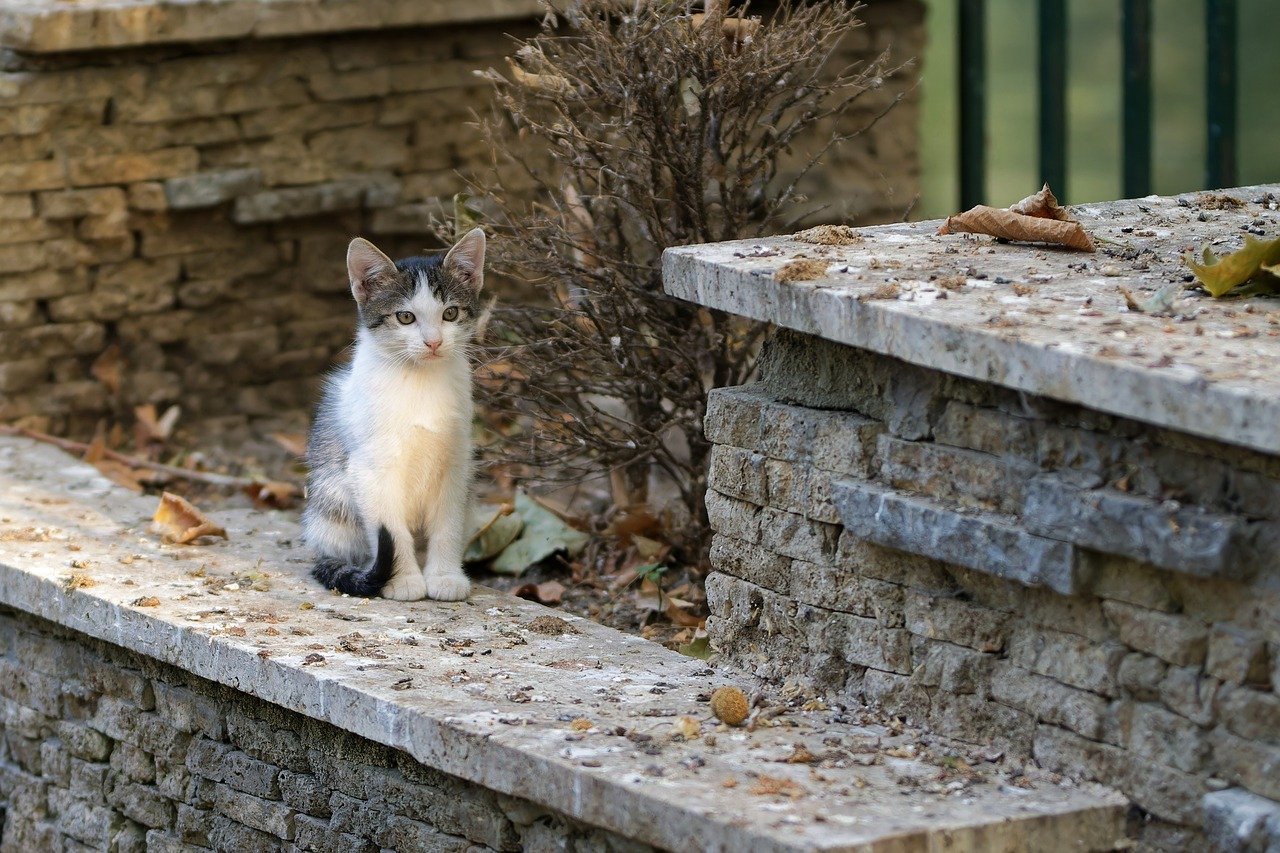
Common Challenges in Training
Training your pet to wait for food is not always a walk in the park. In fact, many pet owners encounter a variety of challenges along the way. Understanding these challenges can help you prepare and adapt your training methods effectively. One of the most common hurdles is impatience. Pets, especially dogs, often have a natural eagerness when it comes to food. Their excitement can lead to behaviors such as barking, whining, or even trying to jump at the food bowl. This eagerness, while adorable, can make it difficult for them to grasp the concept of waiting.
Another challenge is distractions. Whether it's the sound of a doorbell, another pet in the house, or even the smell of something cooking in the kitchen, distractions can easily divert your pet's attention during training sessions. It's crucial to create an environment that minimizes these interruptions. You might find it helpful to train in a quiet room or at a time when your pet is less likely to be distracted by outside noises or activities.
Additionally, consistency in your training approach is vital. If you sometimes allow your pet to eat immediately and other times ask them to wait, it can create confusion. This inconsistency can lead to frustration for both you and your pet. Establishing a clear and consistent routine will help reinforce the behavior you want to see. Here’s a quick table summarizing some of the common challenges and their solutions:
| Challenge | Solution |
|---|---|
| Impatience | Use positive reinforcement and gradually increase wait times. |
| Distractions | Train in a quiet, controlled environment to minimize interruptions. |
| Inconsistency | Establish a regular feeding schedule and stick to it. |
Another aspect to consider is your own patience as a trainer. It’s easy to feel frustrated when progress seems slow, but remember that every pet learns at their own pace. Celebrate small victories and be patient with your furry friend. Maintaining a positive attitude during training sessions can significantly influence your pet's willingness to learn.
Lastly, don’t forget about the importance of health considerations. Sometimes, a pet’s inability to focus or follow commands can stem from underlying health issues. If you notice persistent problems with training, it might be worth consulting your veterinarian to rule out any potential health concerns that could be affecting your pet's behavior.
- How long does it typically take to train my pet to wait for food?
Training duration varies depending on the pet's temperament and previous training experiences. Generally, consistent practice over a few weeks can yield positive results. - What if my pet refuses to wait even after training?
Consider revisiting your training methods. Ensure you're using positive reinforcement effectively and check for distractions in the training environment. - Can I use treats to help with training?
Absolutely! Treats are an excellent way to reward your pet for good behavior and reinforce the concept of waiting.
Dealing with Impatience
When training your pet to wait for their food, one of the most significant hurdles you'll encounter is their natural impatience. Just like humans, pets can become restless when they feel hungry, leading them to whine, bark, or even try to jump up to get their meal. It's essential to recognize that this behavior stems from their instinctual drive to eat, and addressing it requires a blend of patience and strategy. So, how do you tackle this challenge effectively?
First, it's important to understand that impatience is a normal reaction. Your furry friend may not fully grasp the concept of waiting, especially if they’re used to being fed immediately upon showing signs of hunger. To combat this, consistency is key. By establishing a regular feeding schedule, you can help your pet understand when to expect their meals, which can gradually reduce their anxiety around mealtime. Think of it like training a child; if they know dinner is at 6 PM every day, they’ll learn to wait for that time rather than asking for snacks throughout the day.
Another effective method to manage impatience is to incorporate short training sessions into your daily routine. For example, before feeding time, you can engage your pet in a quick game of fetch or practice basic commands. This not only distracts them from their hunger but also reinforces the idea that waiting leads to positive experiences. You can even use a timer to create a structured environment—set it for a few minutes and reward your pet for staying calm and patient during that time.
In addition to these techniques, it's beneficial to use positive reinforcement when your pet displays patience. For instance, if your dog sits quietly while you prepare their food, reward them with a treat or praise. This approach not only reinforces good behavior but also helps your pet associate waiting with positive outcomes. Remember, every moment of patience should be acknowledged; it’s like giving them a high-five for being a good listener!
However, if impatience continues to be an issue, consider modifying your training environment. Sometimes, distractions can amplify your pet's eagerness to eat. Try to create a calm space during feeding times—remove toys, turn off the TV, and minimize noise. The less stimulation there is, the easier it will be for your pet to focus on what you’re asking them to do.
Ultimately, dealing with impatience is a journey that requires time and understanding. By being consistent, using positive reinforcement, and creating a distraction-free environment, you can help your pet learn that waiting for their food is not only possible but also rewarding. Remember, every pet learns at their own pace, so be patient with them as they navigate this new behavior.
- How long should I expect the training to take? Training duration varies by pet, but with consistent practice, most pets can learn to wait within a few weeks.
- What if my pet refuses to wait? If your pet struggles with waiting, revisit your training techniques, ensure you’re rewarding them adequately, and consider consulting a professional trainer.
- Can I use food as a distraction during training? Yes, using a small amount of food as a reward can help keep your pet focused and motivated during training sessions.
Handling Distractions
Training your pet to wait for their food can be a rewarding experience, but it’s not without its hurdles. One of the biggest challenges you might face is distractions. Just like humans, pets can get easily sidetracked by their surroundings. Imagine trying to focus on a task while your favorite song is playing in the background or someone is chatting away nearby. Your pet feels the same way! So, how can you create an environment that minimizes these distractions and keeps your furry friend focused?
First, consider the training environment. Choose a quiet space in your home where your pet feels comfortable yet is less likely to be interrupted. This could be a cozy corner in your living room or a designated training area in your backyard. The key is to limit any external stimuli that could divert their attention. For example, if your dog is easily distracted by other pets or loud noises, it might be best to train during quieter times of the day.
Next, think about your pet's favorite distractions. Is it the sound of the mailman? Or perhaps the sight of birds outside the window? Identifying these distractions allows you to prepare for them. You can close curtains, turn off the TV, or even play soft music to drown out sudden noises. This proactive approach can help your pet focus better on the training session.
Another effective strategy is to incorporate training sessions into their daily routine. For instance, if you usually feed your pet at a specific time, use that time to practice the "wait" command. By associating the command with their meal, they’ll be less likely to be distracted by other things going on around them. It’s like getting them to focus on the prize at the end of the race!
Additionally, consider using high-value treats to keep your pet engaged. When your pet knows there’s something special in store, they’re less likely to be distracted by other stimuli. These treats can be anything from their favorite chew to a small piece of chicken. Just make sure to keep it healthy and appropriate for their diet. This not only keeps their attention but also motivates them to stay focused on the task at hand.
Lastly, patience is key. If your pet seems to be struggling with distractions, take a step back and adjust your approach. You might need to start with shorter training sessions or gradually introduce distractions as they become more adept at waiting. Remember, training is a journey, not a race. With time, your pet will learn to focus better, and you’ll both enjoy the process.
- How long should I train my pet each day?
It's best to keep training sessions short and engaging, around 5-10 minutes, especially for younger pets. This keeps their attention and prevents boredom. - What if my pet doesn’t respond to the “wait” command?
Be patient and consistent. You may need to go back to basics and reinforce the command with positive rewards before trying again. - Can I train my pet in a busy environment?
While it’s possible, it’s more effective to train in a quiet space initially. Once they master the command, gradually introduce distractions.

Monitoring Progress and Adjusting Techniques
When it comes to training your pet to wait for their food, monitoring progress is not just a good idea—it's essential. Think of it like tuning a musical instrument; if you don’t regularly check the notes, you might end up with a cacophony instead of a symphony. By keeping a close eye on your pet’s behavior, you can identify what’s working and what needs a little tweaking. This not only helps you stay on track but also ensures that your furry friend is learning in a way that suits them best.
One effective method for tracking progress is to maintain a training journal. In this journal, jot down notes about each training session, including your pet’s reactions, successes, and any challenges faced. This can help you spot trends over time, such as whether your pet is becoming more patient or if they’re struggling with distractions. Here’s a simple table to illustrate what you might include in your journal:
| Date | Session Duration | Success Rate | Notes |
|---|---|---|---|
| 01/01/2023 | 15 minutes | 80% | Good patience, minimal distractions. |
| 01/02/2023 | 20 minutes | 60% | Got distracted by noise outside. |
| 01/03/2023 | 10 minutes | 90% | Excellent response to wait command! |
As you analyze the data in your journal, you might find that certain techniques resonate better with your pet. For instance, if you notice that your pet waits more patiently after a specific reward, consider using that reward more frequently. Adjusting your techniques based on your observations is key to effective training. Remember, it’s not a one-size-fits-all approach; each pet has their own unique personality and learning style.
Moreover, it’s important to be flexible. If you find that your pet is struggling with a particular command or technique, don’t be afraid to switch things up. Perhaps your pet needs a shorter training session or a different reward. Experimentation is part of the journey, and sometimes, a little creativity can lead to big breakthroughs.
Finally, don’t forget to celebrate the small victories! Each time your pet successfully waits for their food, it’s a step in the right direction. Positive reinforcement goes a long way in maintaining motivation for both you and your pet. So, whether it’s a treat, a belly rub, or a fun play session, make sure to acknowledge their progress. After all, training should be a joyful experience for both of you!
- How long should training sessions be? Training sessions should ideally last between 10 to 20 minutes, depending on your pet's attention span.
- What if my pet refuses to wait? If your pet is having a tough time, try breaking the command down into smaller steps and gradually build up to the full wait command.
- Can I use any type of food as a reward? Yes, but it's best to use small, tasty treats that your pet loves to keep them motivated.
- How do I know if my pet is making progress? Look for signs of improvement, such as increased patience and responsiveness to commands during training sessions.
Frequently Asked Questions
- How long does it take to train my pet to wait for food?
The duration of training can vary based on your pet's temperament, age, and previous training experiences. Typically, with consistent practice, you might start seeing results within a few weeks. Remember, patience is key—just like with people, every pet learns at their own pace!
- What if my pet doesn’t seem to understand the "wait" command?
If your pet struggles with the "wait" command, try breaking the training into smaller steps. Start with short durations and gradually increase the waiting time. Using treats as rewards can also help reinforce the behavior. Keep it fun and engaging, and soon enough, they’ll catch on!
- Can I train my pet to wait for food if they are always hungry?
Absolutely! Understanding your pet's hunger cues is essential. By establishing a consistent feeding schedule, you can help them learn when to expect their meals. This routine will make it easier for them to wait patiently, as they’ll know food is on the way!
- What should I do if my pet gets distracted during training?
If distractions are a problem, try to create a quiet training environment. Limit noise and other animals in the area during sessions. You can also practice in different locations to help your pet learn to focus, regardless of their surroundings. Consistency is crucial!
- Is positive reinforcement really effective in training?
Yes! Positive reinforcement is one of the most effective training methods. By rewarding your pet with treats, praise, or playtime for good behavior, you encourage them to repeat those actions. It builds a strong bond and makes training a positive experience for both of you!
- How can I tell if my pet is making progress in their training?
Monitoring your pet's behavior during feeding times is a good indicator of progress. If they are starting to wait patiently without jumping or barking, that’s a win! Keeping a training journal can help you track their improvements and adjust techniques as needed.

